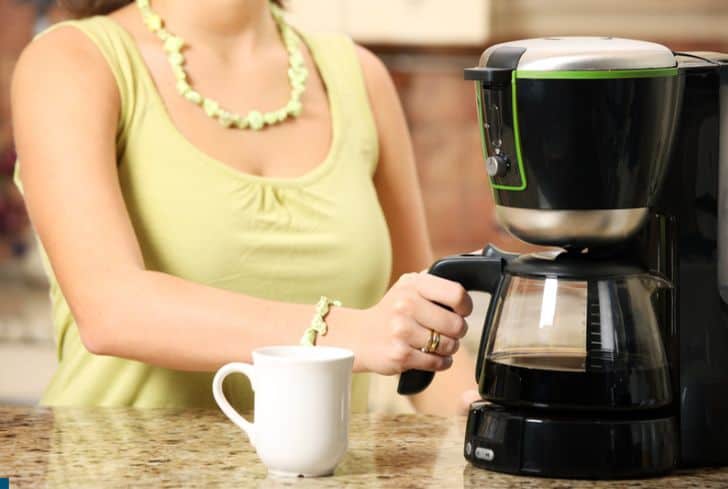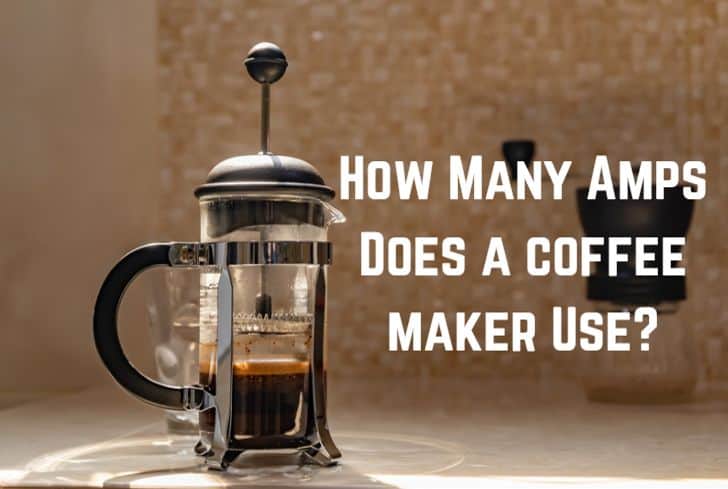So, you love coffee. Get this – there will be 8 billion people worldwide by 2023, and one billion drink coffee daily. If you are one of them, you would like to know that it pays you to own a coffee maker and make your coffee every day than to spend on a cup of Starbucks (although it does offer more ease and convenience).
You can save so much money daily just by making home coffee. So, your mind dwells on a coffee maker. But isn’t that going to increase your electricity bills, which keep spiking yearly? This is where we come in – let’s explain how many amps a coffee maker uses to you in this blog post.
It will help you make a buying decision, no doubt.
How Many Amps Does a Keurig Use?
A Keurig coffee maker uses between 1.3 to 12.5 amps of electrical current for each hour it is plugged in. There is a massive variation because of the different features. These include the differences in the reservoir size, how many cups it can accommodate, and the brewing method.
To calculate the actual energy consumption of any device, divide the wattage by the voltage measurement. Most household appliances, including coffee makers, use 120 volts. There may also be 240-volt ratings.
A Keurig coffee machine consumes between 200 to 400 watts when brewing your hot drink. Of course, this number fluctuates because of additional functionalities like the reservoir size and capacity.
The larger your Keurig machine, the more energy it will consume. This is because the device heats the water itself with a thermal component. Meanwhile, it will also consume electricity while keeping your coffee warm throughout the day. But of course, it will draw fewer amperes in this case.
A smaller Keurig machine consumes 1.3 amps of electricity for each hour of use, but it must be at maximum brewing capacity to draw this much. While resting or keeping your coffee warm, it will not be this much.
On the other hand, a larger device will consume 12.5 amps for each hour of use.
But again, a coffee maker only needs up to an hour to brew good coffee, so your device will only use this energy allocation after some time. It will compound over time.
The heating process is often the longest; this means the coffee will be ready in less time. In other words, your Keurig can make the coffee you need for an entire day in less than ten minutes.
How Many Amps Does a Cuisinart Coffee Maker Use?
A Cuisinart coffee machine consumes 8.75 amps of electricity every hour it is actively used. It is a 1050-watt device equipped to operate on 120 volts. You can calculate the energy consumption by dividing the wattage reading by the volt rating.
Cuisinart coffee makers have many interesting features that no doubt appeal to coffee lovers. You can modify the temperature and strength of your coffee (if you like it strong enough to pack a punch).
However, these functionalities mean you must be ready to give up additional electricity, primarily because they deal with thermal energy. For instance, you can tweak the settings if you want a hotter temperature.
And if you want the coffee to come out stronger, you will also make some adjustments. For every modification made, there is more energy consumed. But of course, the difference is barely noticeable in most cases; negligible at best.
Another factor that will affect the energy consumption of your Cuisinart coffee maker is keeping the drink warm between cups.
How Many Amperes Does a Ninja Coffee Maker Use?
A Ninja coffee machine uses between 7.5 amps to 13 amps of electrical currents for each hour spent brewing coffee. 7.5 amps is more commonly dedicated to smaller outputs, such as keeping your coffee warm or heating the water. The most significant electricity consumption occurs while brewing when the ampere rating is at its peak.
When brewing a ten-cup pot of coffee, your Ninja coffee maker will consume 11.7 amps of electricity because it uses 1400 watts. If preparing a larger quantity, more watts will be required, up to 12.1 amps, to be specific, because the machine will use 1450 watts.
Typically, the higher the quantity of coffee you prepare and the longer it stays in the pot, the more electricity it will require.
Another important factor is the size and model of the coffee pot. If you use a smaller model with fewer bells and whistles, your energy requirement will be lower. Therefore, your model of Ninja coffee machine may not even consume up to 10 amps, especially if it is smaller and intended for fewer consumers.
How Many Amperes Does a Bunn Coffee Maker Use?
A Bunn coffee maker uses between 2 to 7.5 amps of energy for each hour it remains plugged in and active. The answer varies because of the differences in models. If yours is newer with more features, it will require higher energy consumption, naturally.
Bunn coffee makers need fifteen minutes for the water in the reservoir to reach boiling point. It requires less than an additional five minutes to brew your coffee. That’s about twenty minutes to make a well-made pot of coffee.
Do this four more times, and your Bunn coffee maker will use up its 2 to 7.5 amps of energy.
But again, if you set the device to keep your coffee warm, it will run on electricity. It will still be plugged in, although it will draw fewer currents.

How Many Amps Does a 5-Cup Coffee Maker Use?
A five-cup coffee maker uses 1.5 amps to brew wakey juice. These devices run on a 120-volt outlet and consume 550 to 900 amps. Meanwhile, a 5-cup coffee maker will draw fewer amps than larger coffee makers.
A five-cup coffee maker draws a small amount of energy for every hour it is plugged in. 1.5 amps is tiny and is considered one of the lowest energy requirement ratings for household appliances.
If anything, brewing your coffee with a 5-cup coffee maker requires the same energy as a hair blow-drying session. Daily brewing your coffee will have little impact on your overall energy consumption.
How Many Amps Does a Single-Cup Keurig Use?
A single-cup Keurig uses between 900 to 1425 watts, 7.5 to 11.8 amps. It draws 11.8 amps (1425 watts) while boiling and brewing the coffee. And when you want to warm up any leftovers, it uses 900 watts or 7.5 amps to heat it up. This is because it is a single serve (draws more energy) machine.
Boiling the water is the most energy-intensive part of brewing coffee. This is where your single-cup Keurig works the most, and it consumes 1425 watts during the process.
While keeping the coffee warm, it will stay connected to power, even though the energy consumption will not be as high. Even when it is plugged in, the Keurig will draw power, but minimal.
Can You Run a Coffee Maker on a 1500-Watt Inverter?
Yes, as long as the coffee maker consumes at most 1200 watts. The reason is that your inverter should not bear a load of electricity exceeding eighty percent of its capacity.
Luckily, only a few brands of coffee makers consume more than 1200 watts. Even the ones that make ten cups or more will draw 1000 watts.
But if you run a coffee maker on a 1500-watt inverter, it must be the only device running on its power supply. Any other electrical appliance may cause an overload that will trip the inverter.
Do Coffee Makers Use a Lot of Electricity?
Actually, coffee makers use only a little electricity. The highest consumption you will often see around is 1200 watts. Compared to a pressing iron, four-slice toaster, water heater, and washing machine, a coffee maker does not use a lot of electricity. The coffee maker in question is a ten-cup device.
On the other hand, it draws more energy than a television, ceiling or standing fan, microwave, and small blender.
Smaller coffee makers will use less energy for each hour they are plugged in. Since there are slight chances that everyone in your home will drink coffee at the same time and rate, you may not need a device that is as big as a ten-cup coffee maker.
A smaller machine consumes less energy, but even the number of electrical currents depends on the type of coffee maker it is. For instance, an espresso machine may be small but can draw up to 13 amps.
So, do coffee makers use a lot of electricity? The answer depends on the type of machine in question. Preparing it espresso-style requires more energy because of the emulsion process.
Conclusion
Being a fan of coffee has gotten cheaper because of the popularity of coffee makers. They are easy to work with and prove you don’t need a degree in bartending to brew yourself something nice.
However, we must warn you that the units will eventually build up, especially if you use the machine every day (which we can almost guarantee you do). Luckily, there are power-saving modes in newer models, so you can indeed cut back on necessary and unnecessary expenses.






